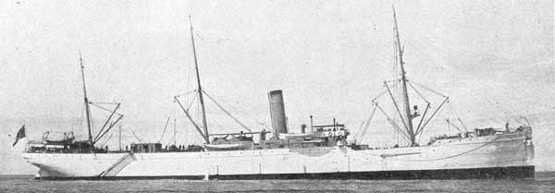- Author
- Wright, Ken
- Subjects
- History - general
- Tags
-
- RAN Ships
- None noted.
- Publication
- March 2009 edition of the Naval Historical Review (all rights reserved)
On 30 December HMS Exmouth steamed out of Grand Harbour in Malta with relief supplies on her decks. After a brief stop at Messina the next morning, she steamed on to the eastern side of the Straits and spent the next seven days in rescue operations to villages along mainland Italy’s Calabrian coast. The 30,000 blankets and medical supplies brought from Malta were like gifts from heaven to the earthquake victims.
‘Blue Jackets’
A party of doctors, seamen, and marines went ashore under the command of Commodore Arthur Stewart and went to the town of Villa San Giovanni. Here the British sailors, who were better known at the time as ‘Blue Jackets’, dug out the dead or those lucky enough to be alive, treated their wounds and transported them to the local railway station which was the only building with its roof intact. Here at least they had cover from the still pouring rain. Exmouth’s large crew, a complement of 627, her size and speed and small boats enabled her to be used to ferry stores from one location to another at speed especially to towns such as such as Villa san Giuseppe, Canitello and Rosali which were largely forgotten as the main rescue efforts were at Messina and Reggie Calabria. By 7 January 1909, her job done, the Exmouth returned to the Grand Harbour in Malta.
One of many examples of international response came from elements of the ‘Great White Fleet,’ a squadron of United States Navy ships sent by President Teddy Roosevelt on 16 December 1907 on a round-the-world good-will tour or as some chose to suggest, a grand pageant of American sea power. Sixteen battleships, all painted white except for the gilded scroll work on their bows were, at the time of the earthquake, returning to the United States via the Suez Canal. During the fleet’s voyage to the Suez, the itinerary was thrown into disarray when the news of the disaster at Messina and Reggio Calabria arrived.

There was little the fleet could do in the way of immediate relief but when the ships reached Suez, Admiral Sperry ordered Culgoa, the fleet’s supply store ship, to hasten to the scene of the disaster and deliver her remaining cargo of several hundred tons of food. Similarly, the other battleships were canvassed for medical stores in excess of their immediate requirements. These and six surgeons were transferred to the Yankton which followed Culgoa through the canal enroute to Messina. In other support efforts, the Mediterranean station supply ship USS Scorpion was sent from Constantinople, while at New York the supply ship Celtic, already loaded with supplies for the fleet, received materials for a hastily prefabricated hospital and set sail for the earthquake zone on 31 December. The fleet returned to the United States on 22 February 1909 having achieved not only international goodwill, but also having saved a good many lives by their efforts in the Messina rescue operations.
International Relief Effort
Although the disaster at Messina and the surrounding area has not been the worst earthquake in the world in terms of lives lost, it did demonstrate how nations, instead of warring against each other, can in time of stress, come together and aid those in need. Merchant ships, liners and battleships from Italy, Britain, America, Germany, France, Denmark, Russia and Greece took part in the truly international relief effort. These ships and their crews from various nations, regardless of the political climate of the time, all responded in a time of need and gave humanitarian aid to the victims of what was Europe’s worst earthquake. Estimates of the total death toll vary but approximately 160,000 perished.
On 6 May 1909, a Royal decree issued by the Italian King Victor Emanuel III was published in Rome. This decree authorised the design and manufacture of a ‘merit’ medal and was to be awarded by a grateful Italian Government to all the institutions and individuals who served ashore and distinguished themselves on the occasion of the earthquake whether rendering assistance and medical treatment or by donating health and administration services and meeting the material and spiritual needs of the sufferers of the disaster. It was intended to recognise outstanding humanitarian work by foreign governments, participating ships and senior service officers and civilians.




